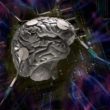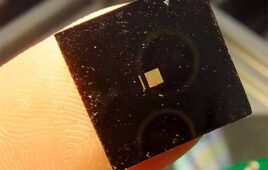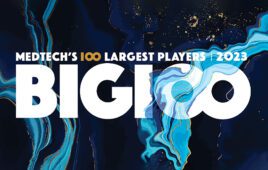
Transplants of neural stem cells might be used to treat brain injuries, but how to get them to the right location? UC Davis researcher Min Zhao and Junfeng Feng, a neurosurgeon at Ren Ji Hospital, Shanghai, showed that they can steer transplanted stem cells (green, in inset on right) to one part of a rat’s brain using electrical fields. [Image from Junfeng Feng/UC Davis]
Min Zhao, a researcher at UC Davis, studies how electric fields can guide wound healing. His previous research has shown that electric fields are able to attract cells into wounds to heal the wounds.
“One unmet need in regenerative medicine is how to effectively and safely mobilize and guide stem cells to migrate to lesion sites for repair,” said Zhao in a press release. “Inefficient migration of those cells to lesions is a significant roadblock to developing effective clinical applications.”
Neural stem cells develop into other brain tissues and are found deep in the brain. To be able to heal wounds on the outer tissues of the brain, they have to move to those areas and transplanted stem cells have to figure out how to migrate to damaged areas as well.
Zhao and Junfeng Feng, a neurosurgeon at Ren Ji Hospital and Shanghai Institute of Head Trauma, created stem cell transplant models in rats. Human neural stem cells were placed in the postal migration stream in the rat. Cells move through that pathway by cerebrospinal fluid and are partially guided by chemical signals.
The two researchers applied an electric field to the rat’s brain and discovered that the transplanted stem cells were able to swim “upstream” against the flow of the fluid and natural cues to move to other places in the brain. The cells remained in the new location for weeks and months after treatment.
“Electrical mobilization and guidance of stem cells in the brain, therefore, provides a potential approach to facilitate stem cell therapies for brain diseases, stroke and injuries,” said Zhao.
The research was published in the journal Stem Cell Reports and was supported by the California Institute for Regenerative Medicine, the National Institutes of Health, the National Science Foundation and Research to Prevent Blindness Inc.
[Want to stay more on top of MDO content? Subscribe to our weekly e-newsletter.]






